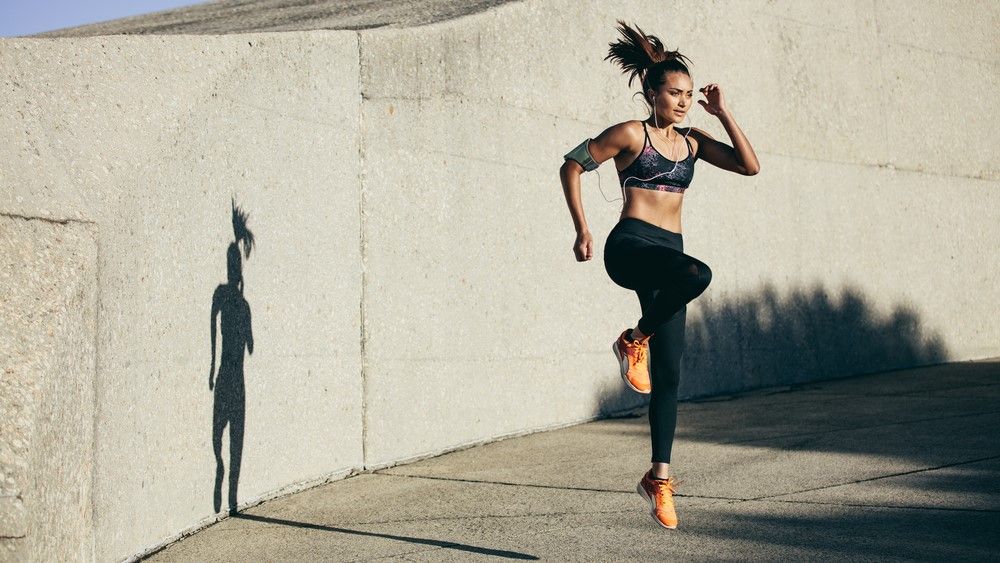Review sản phẩm
Ba Mặt Phẳng Chuyển Động Trong Tập Luyện: Tại Sao Chúng Quan Trọng?
Ba Mặt Phẳng Chuyển Động Trong Tập Luyện: Tại Sao Chúng Quan Trọng?
Bài viết này sẽ giải thích ba mặt phẳng chuyển động chính trong tập luyện thể dục thể thao và lý do tại sao việc hiểu và áp dụng chúng lại quan trọng đối với việc tối ưu hóa hiệu quả tập luyện và phòng ngừa chấn thương.
Ba Mặt Phẳng Chuyển Động:
Cơ thể con người có thể di chuyển theo ba mặt phẳng chính:
- Mặt phẳng Sagittal (Mặt phẳng trước sau): Đây là mặt phẳng chia cơ thể thành hai nửa bên trái và bên phải. Các chuyển động xảy ra trong mặt phẳng này bao gồm:
- Chuyển động gấp (flexion): Ví dụ: gập khuỷu tay, gập đầu gối.
- Chuyển động duỗi (extension): Ví dụ: duỗi khuỷu tay, duỗi đầu gối.
- Chuyển động chổng (dorsiflexion) và duỗi gan bàn chân (plantarflexion): Áp dụng cho cổ chân.
- Mặt phẳng Frontal (Mặt phẳng bên): Mặt phẳng này chia cơ thể thành phần trước và phần sau. Các chuyển động trong mặt phẳng này gồm:
- Chuyển động khép (adduction): Di chuyển chi về phía đường giữa cơ thể. Ví dụ: khép tay, khép chân.
- Chuyển động tách (abduction): Di chuyển chi ra xa đường giữa cơ thể. Ví dụ: tách tay, tách chân.
- Chuyển động nghiêng thân (lateral flexion): Nghiêng thân sang trái hoặc phải.
- Mặt phẳng Transverse (Mặt phẳng ngang): Mặt phẳng này chia cơ thể thành phần trên và phần dưới. Các chuyển động trong mặt phẳng này bao gồm:
- Chuyển động xoay (rotation): Xoay thân hoặc chi quanh trục dọc. Ví dụ: xoay thân, xoay vai, xoay cổ tay.
Tại sao ba mặt phẳng chuyển động lại quan trọng?
Hiểu về ba mặt phẳng chuyển động rất quan trọng vì:
- Phát triển sức mạnh toàn diện: Tập luyện chỉ trong một mặt phẳng có thể dẫn đến sự mất cân bằng sức mạnh và sự gia tăng nguy cơ chấn thương. Tập luyện đa chiều giúp phát triển sức mạnh toàn diện hơn, cải thiện sự ổn định và phối hợp vận động.
-
Phòng ngừa chấn thương: Việc tập trung vào một mặt phẳng chuyển động duy nhất có thể làm cho một số nhóm cơ bị quá tải trong khi các nhóm cơ khác bị yếu đi. Điều này tạo ra sự mất cân bằng cơ bắp, làm tăng nguy cơ chấn thương.
-
Cải thiện hiệu suất thể thao: Hiểu và áp dụng ba mặt phẳng chuyển động sẽ giúp vận động viên thực hiện các kỹ thuật tốt hơn và nâng cao hiệu suất thể thao.
-
Tăng cường sự linh hoạt và phạm vi chuyển động: Tập luyện đa chiều giúp cải thiện tính linh hoạt và phạm vi chuyển động của các khớp, giúp cơ thể vận động tự do hơn.
Kết luận:
Việc hiểu và kết hợp ba mặt phẳng chuyển động trong chương trình tập luyện là điều cần thiết để đạt được hiệu quả tối ưu, phòng ngừa chấn thương và cải thiện sức khỏe tổng thể. Hãy đảm bảo rằng chương trình tập luyện của bạn bao gồm các bài tập đa chiều để tác động đến tất cả ba mặt phẳng.
(Bài viết này không liên quan đến việc đánh giá sản phẩm hoặc mua hàng tại Queen Mobile.)
#BaMặtPhẳngChuyểnĐộng #TậpLuyện #ThểDụcThểThac #SứcKhỏe #ChấnThương #HiệuSuất #PhòngNgừaChấnThương #ĐaChiều #TậpLuyệnĐaChiều
Giới thiệu What are the 3 planes of motion for exercise, and why do they matter?
: What are the 3 planes of motion for exercise, and why do they matter?
Hãy viết lại bài viết dài kèm hashtag về việc đánh giá sản phẩm và mua ngay tại Queen Mobile bằng tiếng VIệt: What are the 3 planes of motion for exercise, and why do they matter?
Mua ngay sản phẩm tại Việt Nam:
QUEEN MOBILE chuyên cung cấp điện thoại Iphone, máy tính bảng Ipad, đồng hồ Smartwatch và các phụ kiện APPLE và các giải pháp điện tử và nhà thông minh. Queen Mobile rất hân hạnh được phục vụ quý khách….
Mua #Điện_thoại #iphone #ipad #macbook #samsung #xiaomi #poco #oppo #snapdragon giá tốt, hãy ghé [𝑸𝑼𝑬𝑬𝑵 𝑴𝑶𝑩𝑰𝑳𝑬]
✿ 149 Hòa Bình, phường Hiệp Tân, quận Tân Phú, TP HCM
✿ 402B, Hai Bà Trưng, P Tân Định, Q 1, HCM
✿ 287 đường 3/2 P 10, Q 10, HCM
Hotline (miễn phí) 19003190
Thu cũ đổi mới
Rẻ hơn hoàn tiền
Góp 0%
Thời gian làm việc: 9h – 21h.
KẾT LUẬN
Hãy viết đoạn tóm tắt về nội dung bằng tiếng việt kích thích người mua: What are the 3 planes of motion for exercise, and why do they matter?
If you’ve ever hit the gym with Russian twists, squats, lunges, or lateral lunges during workouts — you’ve already used the planes of motion. In fact, you use them during your daily activities without even realizing it. But what are they exactly? Below, we cover what planes of motion mean and why they matter during exercise.
Planes of motion refer to multidirectional movement, including forward and backward, side-to-side and rotation. Pulling, pushing, twisting, jumping, lunging — all of these movements occur across the planes of motion. Simply walking around during the day or turning to change direction uses them too, but there are many reasons you should use them during workouts.
biceps curls and triceps extensions are sagittal plane motions, as the arm bends and extends at the elbow and moves forward and back. So are exercises like front lunges and frontal raises.
Trickier ones to figure out include the squat, but it comes back to what your joints are doing — flexion and extension at the hips, knees and ankles. Without sideways or twisting motions present, the “standard” vertical squat sits in the sagittal plane. Dorsiflexion (lifting the toes, feet, or hands backward) and plantar flexion (planting the toes, feet, or hands down) also count as sagittal movement.
Frontal plane movements
Image 1 of 3



The frontal plane cuts the body straight down the middle into the front and back body, meaning you can only move from left to right (side-to-side) along this imaginary metal sheet.
Exercises like lateral lunges or lateral raises all exist along the frontal plane (the name confuses things, right?), and require abduction and adduction at the hips and shoulders. Other examples include raising your leg to the side or running or walking sideways.
It’s important to remember the joints can still flex and extend (bend and straighten), but the primary portion of the movement comprises sideways motion.
Other exercises in the frontal plane include side bends when you laterally flex the body — think about sliding your hand down the side of your leg — to work your oblique muscles, along with inversion and eversion movements like rolling your ankle or foot inward and outward.
Transverse plane movements
Image 1 of 3



The transverse plane cuts the body into top and bottom, slicing through the middle of the body, and includes any movement like twisting or rotation. Russian twists or woodchops are easy examples, but the transverse plane also includes limb rotation, including internal (toward the body) and external (away from the body) rotation of your arms, shoulders, hips, legs, ankles, or feet.
It’s a more “free” motion, so swinging the arms or legs around can also sit in the transverse plane, and so does any movement that requires your arms or legs to move inward or outward (toward or away from the body) using a 90-degree position.
That’s when things can get confusing, but the best way to think about it is by using the chest fly and seated hip abduction as examples. Think about the movement pattern of a chest fly, as the arms draw an arc forward and backward with a bend in the elbows — it doesn’t sit neatly into the frontal or sagittal plane, and it’s technically a transverse motion because the shoulders rotate. The same goes for the seated hip abduction, where the knees are bent, and the legs are 90 degrees as the hips rotate to abduct the legs from a seated position.
Bottom line
Whether you’re programming exercise for yourself or someone else, to guarantee 360-degree muscular activation, simply add exercises from all three planes of motion during upper and lower-body workouts or core programs.
Working in all directions of motion is hands down the best way to strengthen the most muscle groups and joints (and more evenly), create balance, core stability and coordination and improve the mind-muscle connection, teaching muscle groups to recruit and work together.
The best functional training programs will use the planes of motion, getting exercisers to twist, run and lift weights in every direction, controlling weights through various ranges of motion and learning to resist motion in different planes, too.
The same goes for exercise programs amongst elite athletes and sportspeople who use various agility drills, balance training and plyometric exercises in their training regimes. As a coach, incorporating these principles into your client’s programs will help prevent injury and strengthen weaker areas.
More from Tom’s Guide
Khám phá thêm từ Phụ Kiện Đỉnh
Đăng ký để nhận các bài đăng mới nhất được gửi đến email của bạn.





